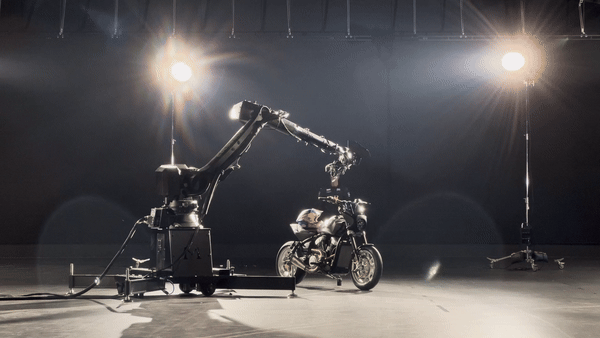The Rise of Motion Control in 2025: How Cinematic Robots Are Reshaping Video Production
Introduction
In 2025, motion control filmmaking has transitioned from a specialized technique to a central pillar of modern video production. With the integration of advanced cinematic robots and motion control photography, directors of photography (DPs) and cinematographers are unlocking new creative potentials. This evolution is particularly evident in commercial video production, advertising, and tabletop production, where precision and repeatability are paramount.
The Evolution of Motion Control Technology
Motion control systems have undergone significant advancements, offering filmmakers unprecedented control over camera movements. These systems enable precise, repeatable movements that are essential for complex visual effects and dynamic shots. The integration of robotic arms and sophisticated software allows for intricate camera paths that were previously unattainable.
Applications in Commercial Video Production
In the realm of commercial video production, motion control technology has become indispensable. Advertising campaigns demand high-quality visuals that can capture the audience's attention instantly. Motion control systems facilitate the creation of smooth, consistent shots that enhance the product's appeal. For instance, in beverage commercials, capturing the fluid motion of a pour or the effervescence of a drink requires precise timing and movement, which motion control systems provide.
Enhancing Tabletop Production
Tabletop production, which focuses on filming small-scale subjects like food and products, benefits immensely from motion control photography. The ability to execute exact camera movements repeatedly ensures consistency across shots, which is crucial for editing and post-production. This precision allows DPs and cinematographers to highlight specific product features, textures, and movements, creating visually compelling content that resonates with viewers.
Advantages of Motion Control in Cinematography
Precision and Repeatability: Motion control systems offer exact camera movements that can be replicated multiple times, essential for visual effects and complex scenes.
Creative Flexibility: Filmmakers can design intricate camera paths that add depth and dynamism to shots, enhancing storytelling.
Efficiency in Production: Automated camera movements reduce the time spent on reshoots and adjustments, streamlining the production process.
Enhanced Visual Effects: Consistent camera movements are vital for integrating CGI and other visual effects seamlessly into live-action footage.
Safety and Accessibility: Robotic systems can perform complex movements in environments that might be hazardous or challenging for human operators.
The Role of DPs and Cinematographers
Directors of photography and cinematographers are at the forefront of integrating motion control technology into filmmaking. Their expertise in visual storytelling, combined with technical proficiency, allows them to harness these tools effectively. In Los Angeles, a hub for innovation in film and advertising, professionals are continually exploring new ways to incorporate motion control into their workflows, pushing the boundaries of what's possible in visual media.
Conclusion
The impact of motion control technology in 2025 is profound, offering filmmakers tools to create more engaging, precise, and visually stunning content. As cinematic robots and motion control photography become more accessible, their adoption across various facets of video production is set to increase. For DPs and cinematographers, embracing these advancements is not just about staying current—it's about leading the evolution of storytelling in the digital age.


